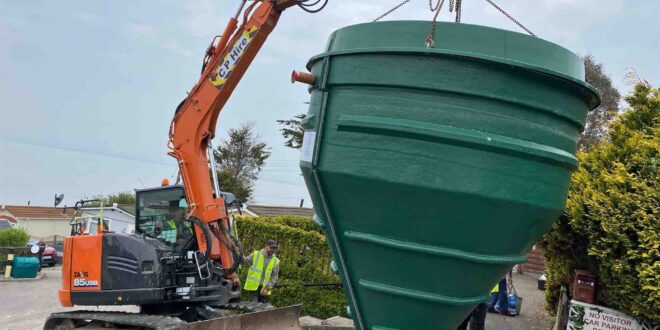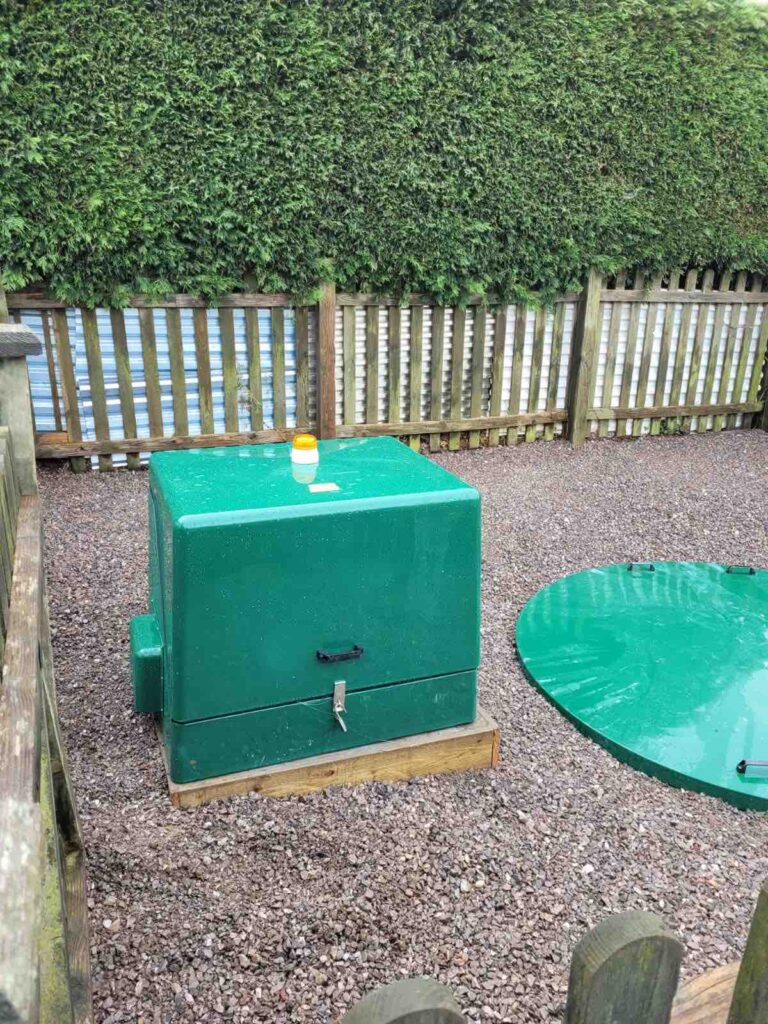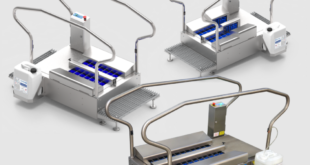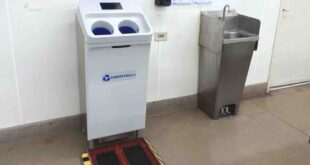When a wastewater treatment plant needed replacement, it was not just the cliff-top position that presented a challenge, as residents needed the system to continue operating throughout the duration of the works
A wastewater treatment plant at a static homes park in North Somerset has been replaced with no service disruption. Park residents were able to continue to use their water supply and appliances throughout the installation. The compact and efficient system serves over 50 people and has been installed in a space just over three metres wide.
The picturesque park near Clevedon, directly overlooking the Severn Estuary, is home to 20 properties. After 20 years of use, the existing wastewater treatment plant serving the homes had reached the end of its lifecycle. No longer economical to maintain, residents reported that the system was also beginning to emit an odour, especially during warm weather. Engineering services provider, Rotamec, was called in by the park’s maintenance contractor to resolve the issue.
Constant use required
The park’s residents relied on the system for all wastewater treatment. The plant was active 24 hours a day, 365 days a year, dealing with discharged water from the homes’ toilets and bathrooms, as well as kitchens and appliances. The key challenge was how to ensure continuation of service for the residents, while at the same time as replacing the system.
While the park provides excellent panoramic views across the estuary, the cliff-top position meant that the works would have to take place within a restricted space, combined with safety precautions surrounding the precarious location. Together, this would make the installation far more complex.
New specification
The park’s existing sewage plant included a four-chamber system. With the wastewater inlet flowing into the first chamber, solids would sink, while wastewater overflowed segregating walls through the series of chambers. Meanwhile, circulated air throughout the system encouraged the microbial bio-digestive process. When the wastewater finally overflowed into the fourth chamber, liquid quality would reach an acceptable Environment Agency (EA) grade for effluent into the water course.
Instead, to take up less of the park’s valuable space, for the new plant, Rotamec’s engineers specified a single chamber wastewater treatment system. The compact design would also enable a faster, simpler installation, crucial considering the challenging location. Most importantly, this would minimise the time on site for the benefit of the park’s residents.
Eventually, the new system would measure just 3.3m wide, inserted to a below ground depth of 3.75m. Despite the smaller size of the new system, its treatment capacity would be increased, capable at any one time of catering for all the park’s residents, plus guests, as well as capacity for expansion.
To achieve this process, the operation of the new system includes a wastewater inlet that flows directly into the bio-chamber. Within the chamber, a blower feeds in air that continually circulates the water-suspended solid waste. The microbial process breaks down the solid waste and harmful bacteria, while sinking solids are continually drawn back into the aeration chamber by a draft tube. Treated liquid meeting the EA standard is then discharged into the water course.
Uninterrupted use during installation
To ensure continued operation for residents, Rotamec project managed its partner in civil engineering, Trent’s Drains, to excavate and remove the three outermost chambers of the existing plant. From the cliff-top position, an excavator carefully removed the original plant.
The new, single chamber wastewater system was then lowered into the vacant space, while the original incoming chamber continued to operate, enabling residents to use as well as discharge water as normal throughout the project. A small concrete plinth was also constructed to stand a weatherproof control cabinet containing the blower, feeding the chamber via a duct, as well as a pressure gauge and low-pressure alarm. On the final day of the project, engineers diverted the incoming flow into the new system before removing the remaining chamber from the original plant, backfilling the previous inlet with concrete.
Satisfied residents
Fully operational after the 10-day works, the area has now been refenced, top soiled and re-seeded. Blending in with the surface, all that residents are able to see of the system is a single, low-profile circular cover. Most importantly, optimum air quality has returned, with the plant providing odourless operation. The whole unit is very low noise, and is also highly efficient, with minimal running costs. The works have improved the park for residents, and protection of the surrounding environment is also ensured as the wastewater treatment plant fully conforms to EA standards.
The low-maintenance system will be cared for by Rotamec, typically involving an annual inspection, plus desludging intervals every six to 12 months. The plant is highly reliable and expected to achieve over 25 years’ operational use.
 Engineer News Network The ultimate online news and information resource for today’s engineer
Engineer News Network The ultimate online news and information resource for today’s engineer






